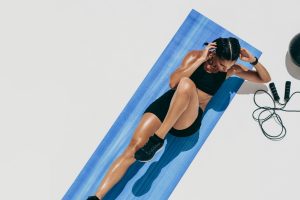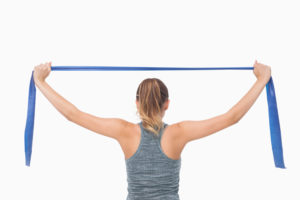You’ve just completed an hour-long sweat sesh. Now comes the question: “What should I do with my hair?”
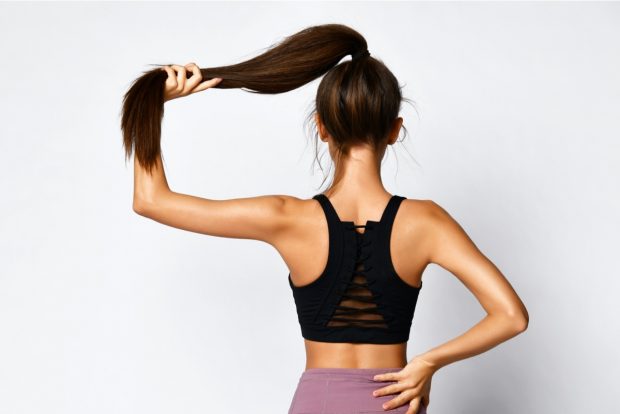
While sweaty hair might not be your favorite look, washing it isn’t always the best solution.
Find out what to do with your hair after every type of Gymondo workout. From low-impact cardio to high-intensity interval training (HIIT), we’ve got your hair care needs covered in one post!
Check out our 4 essential tips for optimal post-workout hair care.
Haircare for Low-Intensity Workouts (Pilates, Yoga, Barre)
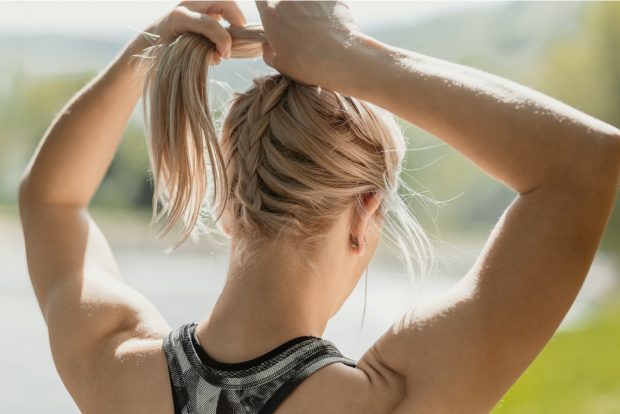
You can gauge what you need to do with your hair based on your hairline. When you’re not sweating too much, your hairline will remain dry. This means you can probably skip washing your hair post-workout.
Light workouts like Pilates, yoga and barre have the wonderful quality of making your hair look great post-workout. Knowing this, try lightly styling your hair pre-workout and let the low-intensity exercises take care of the rest. You’ll love the easy transition your hair makes from pre- to post-workout with just a little bit of styling—think loose ponytails or braids, or a few squirts of saltwater spray for short hair.
Haircare for Medium-Intensity Workouts (Jogging, Dance-Cardio, Elliptical)
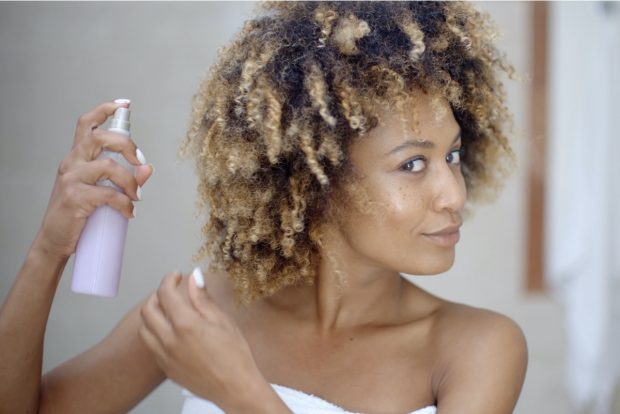
If you crave a wavy look, leave your hair down during medium-intensity exercises, such as jogging or dancing. Sweat is a natural salt spray that adds volume and curls to your hair.
But if it’s too annoying to leave your hair down, go for a simple ponytail. After a medium-level workout, your hairline will get just the right amount of moisture to let you mold it into shape. And just because you break a sweat, doesn’t necessarily mean you need to wash your hair. Blow-dry your hair on low heat and use a dry shampoo for anti-grease—but only after your hair is completely dry.
Haircare for High-Intensity Workouts (HIIT, Bootcamps, CrossFit)
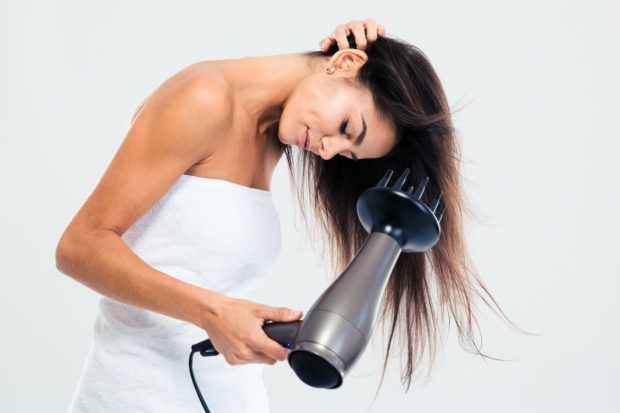
Try wearing a sweatband to keep your locks out of your face. Don’t remove your hairband until your hair is completely dry post-workout. If you’re in a rush, use a blow dryer to speed up the process.
You can also try skipping the shampoo post-workout and running conditioner through the ends of your hair instead. If your hair is super dry, consider a leave-in conditioner for that added layer of protection post-workout.
4 Post-Workout Haircare Tips:
1. You shouldn’t shampoo your hair every day. If you’re doing high-intensity workouts daily, wash your hair two to three times a week. Between shampooing sessions, rinse your scalp and run conditioner through your ends.
Because sweat can weaken your hair and shorten its lifespan, it’s important to lock in moisture. That’s why it’s not advised to shampoo your hair daily. Instead, use moisturizing products to keep your hair hydrated.
2. Dry shampoo is great but not on wet hair. As the name implies, dry shampoo is designed to work on dry hair. When applied to wet hair, it’ll leave a cakey mess from the powder-water mixture. Probably not a good look!
3. Sweat is the most natural saltwater spray. And remember: sweat and oil are two completely different things. So, consider your next workout a free application of that expensive saltwater spray you’ve been using.
Use sweat to your advantage as one of the best hair products around! But leaving sweat in your hair for too long will leave your hair lank and limp, so be sure to wash every 2nd or 3rd day.
4. When you do wash your hair, use sulfate-free shampoo. Most shampoos contain harsh ingredients that strip away natural moisture from your hair strands, with the worst offenders being sulfates.
Sulfates are best known for stealing a huge percentage of hydration from your hair and stripping it of its shine. Solution: find a gently, sulfate-free shampoo that will cleanse, not parch your hair.


